Toyota has given the ever-popular Hilux pickup an update for the 2025 model year, which includes the first-ever use of hybrid power for the model.
Is this a Hilux mixed with a Prius?
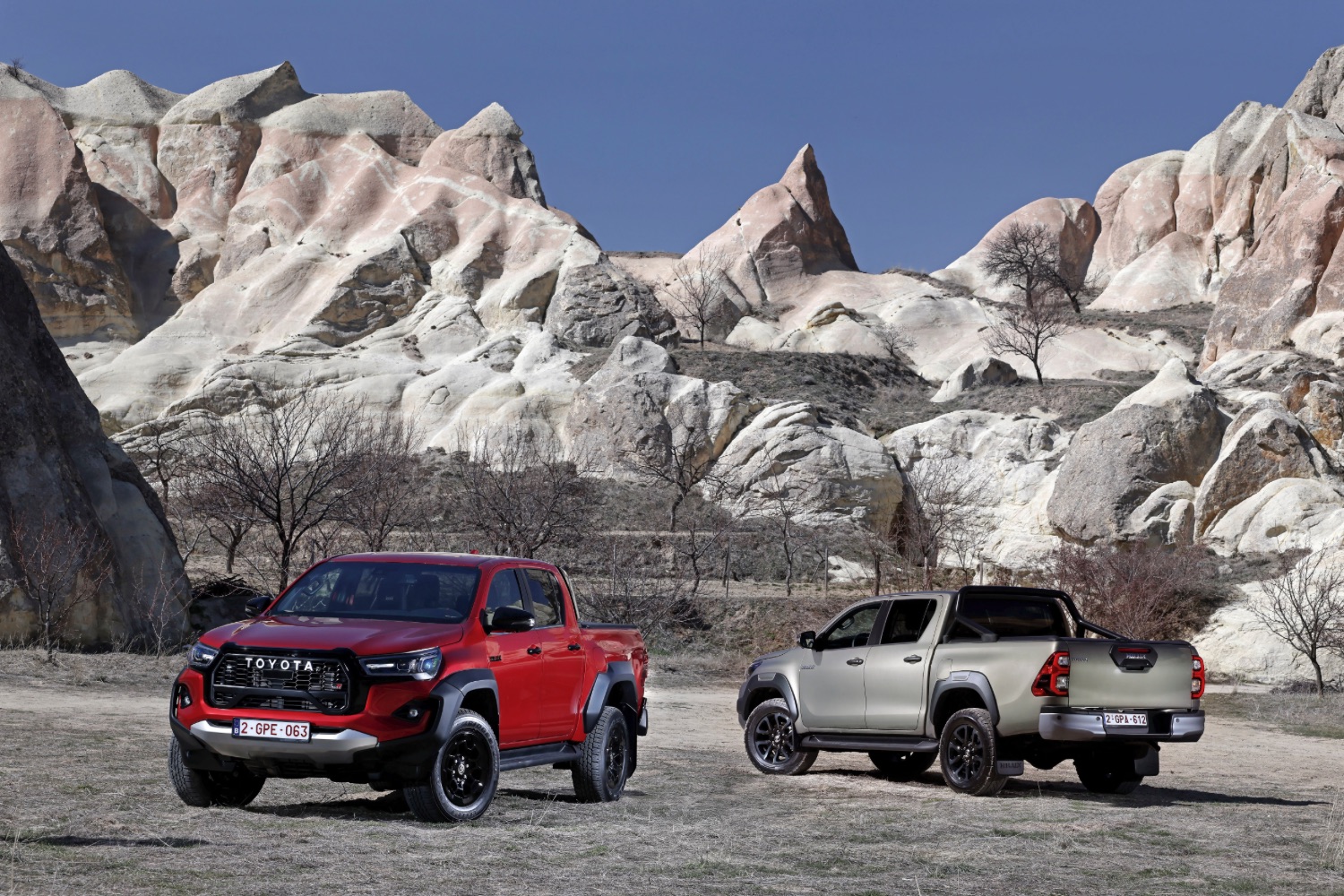
Not quite, no. The Hilux isn't getting a full hybrid nor a plug-in hybrid system, but instead, a simpler 48-volt mild hybrid setup shared with the new Land Cruiser. It combines the familiar 2.8-litre four-cylinder diesel engine with an integrated 48-volt starter/generator, which uses a permanent magnet synchronous setup. It uses a compact lithium-ion battery with 13 cells and a 4.3 Ah capacity. It weighs just 7.6 kg and is, of course, topped up by both the engine and regenerative braking. It's stashed under the front seats.
Toyota claims that stop-off acceleration is smoother thanks to the hybrid system, and so too is slowing down, thanks to the regenerative braking effect. The hybrid system also means that the Hilux engine's idling speed can be dropped from 720rpm to 600rpm, making the truck easier to manoeuvre at low speeds.
Is a hybrid Hilux going to be less rugged?
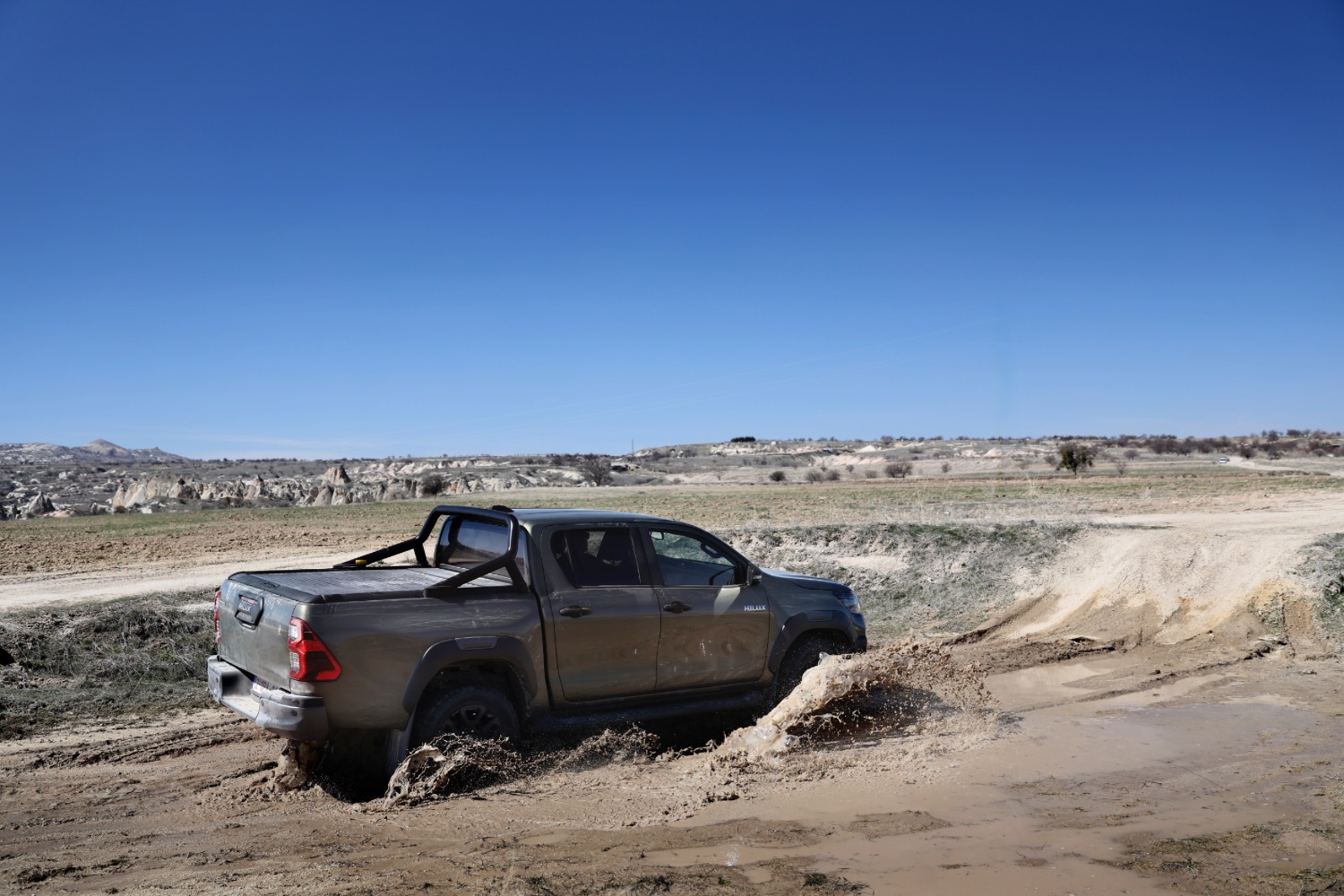
No, not at all. Toyota says that the hybrid module is compact, so it's easy to integrate with the Hilux's existing mechanical package, and so there's no impact on ground clearance nor the standard 700mm wading depth. More importantly, there's a five per cent improvement in fuel consumption and CO2 emissions compared to the 2.8-litre diesel Hilux. When fully charged, the battery can supply up to an additional 12 kW of power and 65 Nm of torque to the powertrain at start-off.
The Hilux hybrid also gets ultra-rapid engine restarts when you're using the stop-start function or the high-speed coasting function, thanks to the fact that the starter motor is always engaged and ready to go. It can also recognise when you're still sitting but have released a bit of brake pressure and won't restart the engine until you're actually ready to go. The system also means there's a more effective hill-hold function when pulling away on a steep slope.
There's also a handy Multi-Terrain Select system, which adjusts the Hilux's traction control, four-wheel drive, stability control, and throttle settings through six different modes — Sand, Mud, Rock, Dirt, Deep Snow and Auto.
Will it be as reliable with a hybrid?
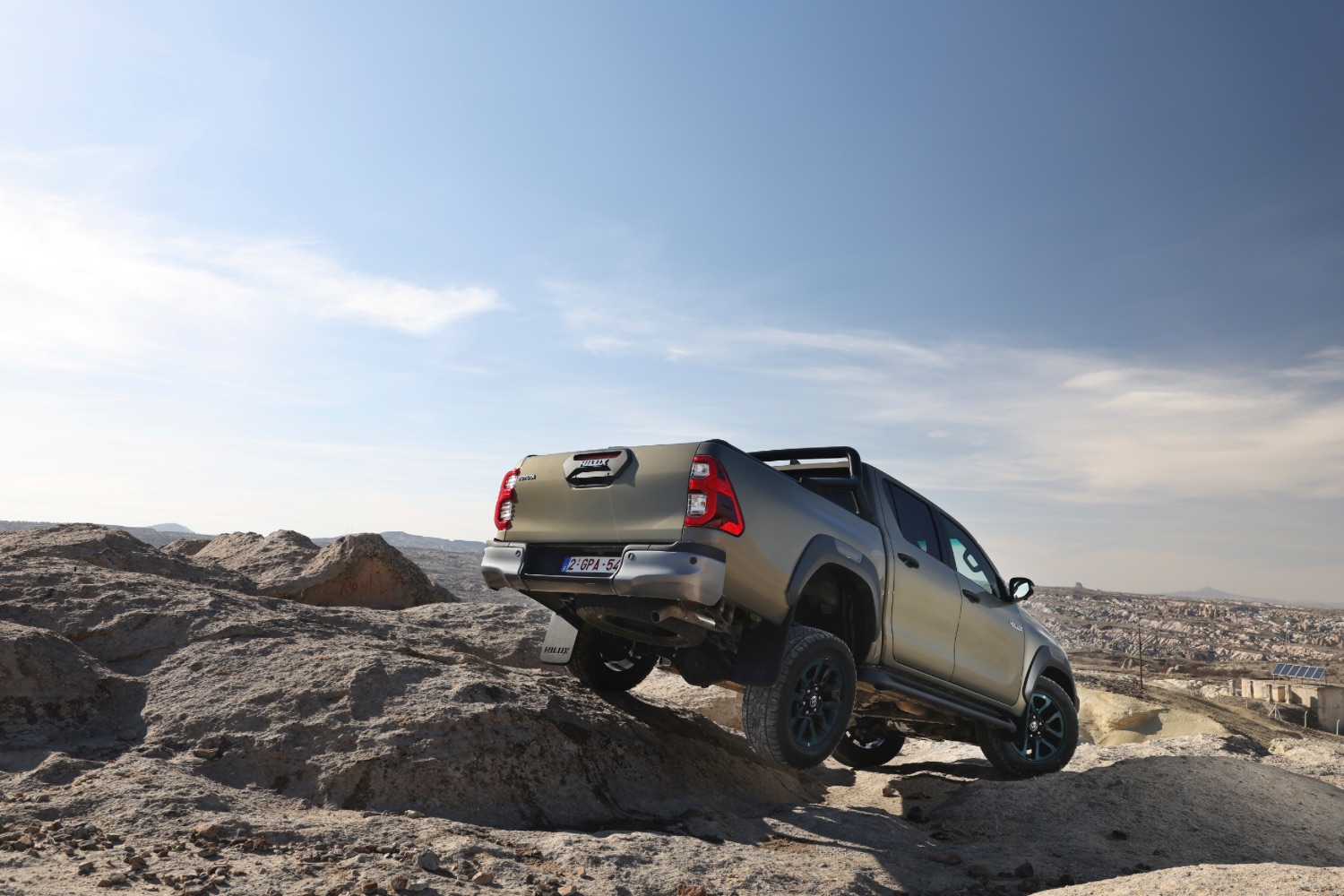
Yes, it should be. Surely Toyota isn't going to risk the famous indestructibility of the Hilux? To underline the point, the Japanese giant has developed a new two-arm tensioner for the belt used by the starter generator, which ensures the belt tension required by the electric motor. It's a first for Toyota, and the belt itself is made with a high-strength cotton fabric layer on the ribbed side of the belt, which reduces noise, absorbs water and maintains its friction coefficient when wet. That means that not only can the Hilux wade through 700mm of standing water, but it can also stop in that standing water for up to ten minutes.
A high-strength aramid cord is used at the core of the belt, enhancing reliability when tension increases are experienced when the motor generator starts the engine or increases the level of power generation. Stoppers in the tensioner arms theoretically reduce noise and vibration caused by the arms striking the housing when switching to motor-generator mode. Bushes in the damping mechanism are designed to help prevent foreign bodies, such as dust and grit, from entering the sliding parts of rough road driving.
What about power?
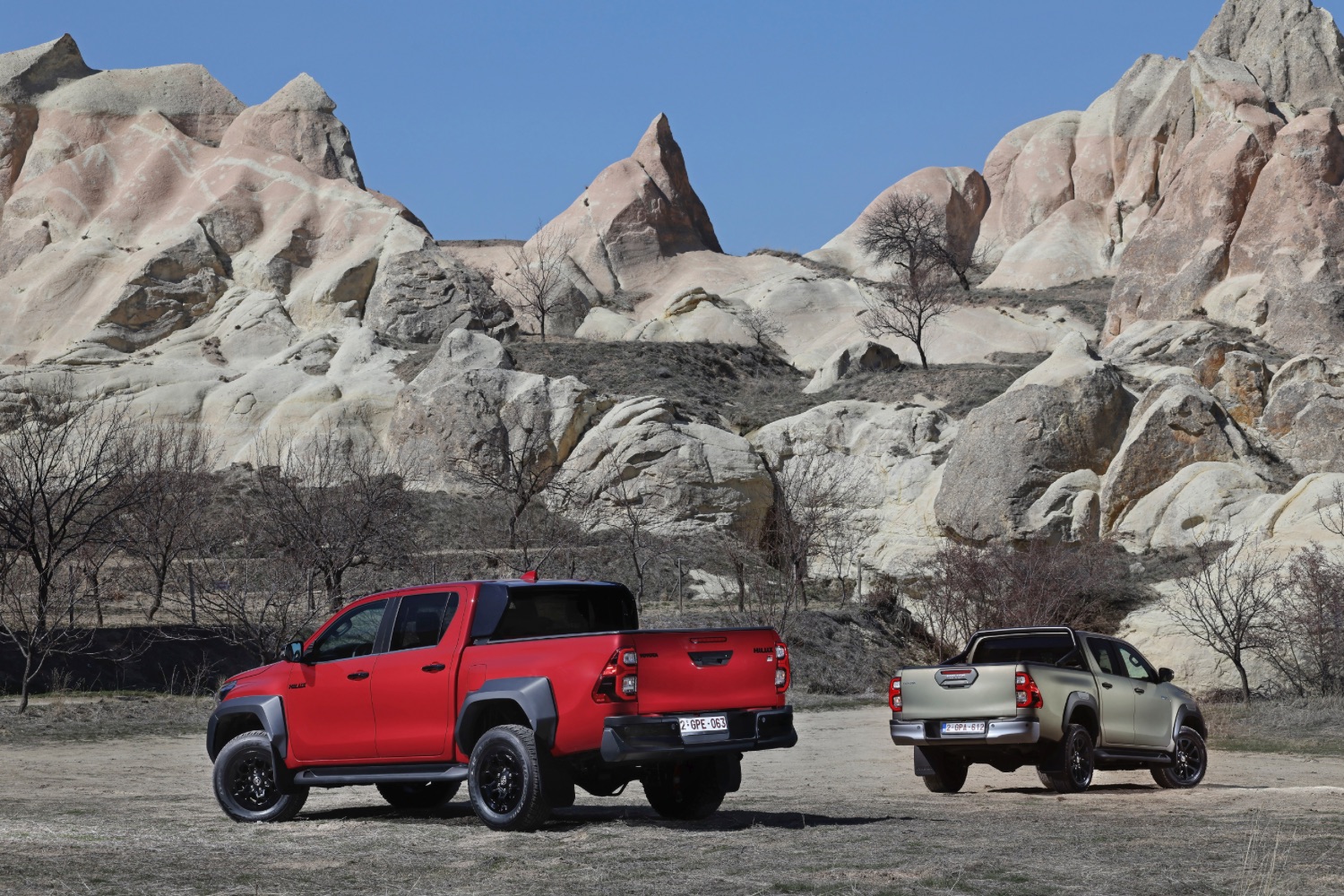
The 48-volt mild hybrid Hilux gets 204hp from its 2.8-litre engine, with 500Nm of torque between 1,600 and 2,800rpm. It's also compatible with HVO bio-diesel. All of that allows the 5.3-metre-long Hilux to carry up to 1,000kg of payload in its 1,555mm long load bed and tow up to 3,500kg on a braked trailer. As before, the rear suspension features leaf springs and twin shock absorbers, and the Hilux has a running ground clearance of 310mm and approach and departure angles at 29 and 26 degrees, respectively.
Is it safe?
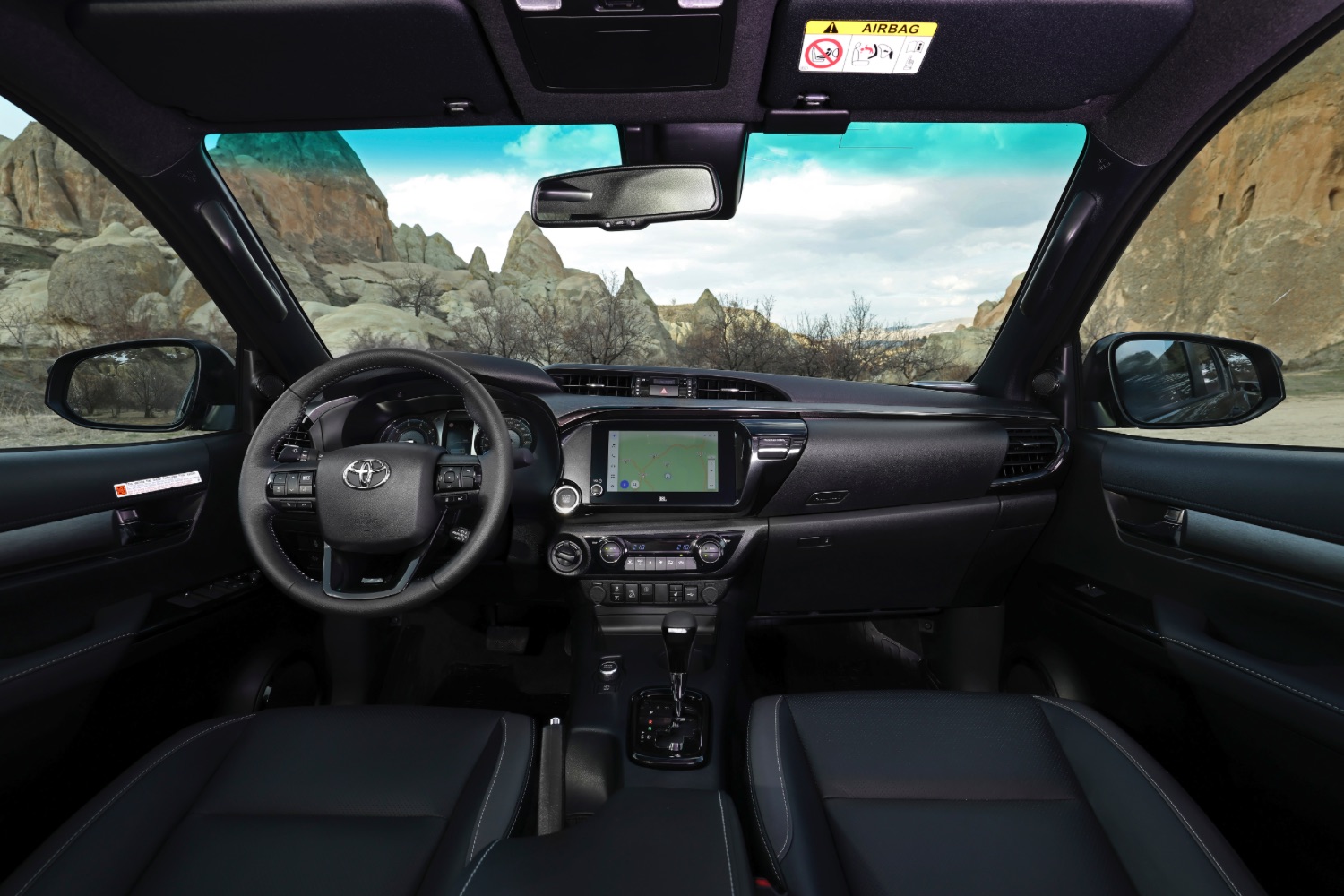
Yup - the Hilux might be a pickup, but it gets the latest Toyota Safety Sense technology, which includes an enhanced Pre-Collision System (PCS) that can better detect pedestrians at night, bicyclists during daytime, and oncoming vehicles or pedestrians at junctions when making turns. There's also adaptive cruise control, traffic sign recognition, and automatic high beam assist.
Inside, there's an eight-inch infotainment touchscreen with wireless Apple and Android phone connections and a high-end JBL stereo.
What about the sporty one?
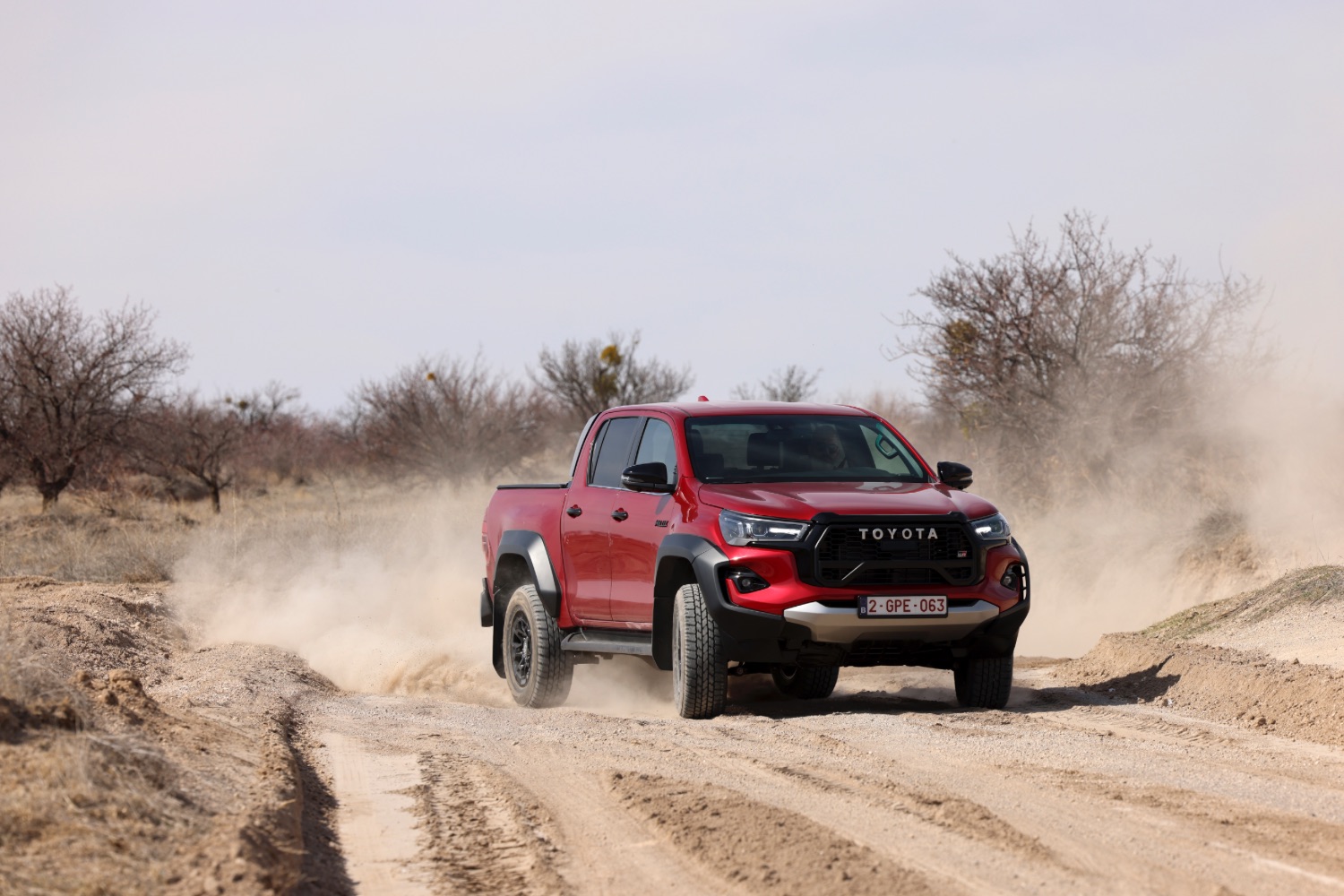
Oh yes. The GR-badged Hilux was originally just that - a badge and some fancy trim, but lately, Toyota has been making the model more overtly sporty and claims that it's drawing on its experience of running the Hilux - successfully - in the Dakar off-road rally. So the new GR Sport II version gets an increase in the approach angle from 29 to 30 degrees and higher ground clearance (323mm), and widening the front and rear tracks by 135mm and 155mm, respectively.
The suspension has also been changed, with a 70mm increase in the width of the front arms, the adoption of a lighter, tubular anti-roll bar, and the repositioning of the spring and damper assemblies further outboard. At the rear, the axle has a new square cross-section, and the dampers have been repositioned to the outside of the vehicle's frame. The GR Sport II Hilux also gets new monotube dampers with large-diameter (46mm) pistons in place of the previous twin-tube units.
In terms of engine power and load-hauling performance, the Hilux GR Sport II is identical to its regular cousins, but you'll be able to spot one thanks to the red-painted rear coil springs and dampers, red brake callipers, black wheelarch extensions, and new-design 17-inch black alloy wheels. There are also mesh grilles dotted around and black and silver exterior trim. Inside are paddle shifters for the automatic gearbox, black synthetic suede and leather sport seats with contrast stitching, and some carbon-fibre trim on the dash.



























